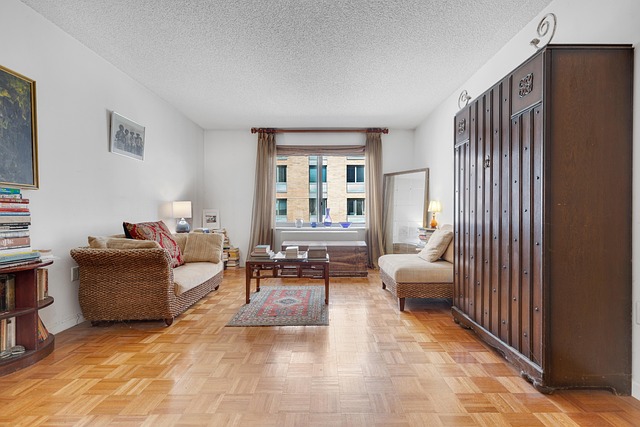Sober Living Homes Rochester NY: Understanding Addiction Treatment and Resources
In Rochester, New Hampshire, a robust network of resources aids in substance use disorder recovery,…….
Over 15% US adults have used prescription painkillers not prescribed to them.
Welcome to an in-depth exploration of the transformative concept of sober living homes, specifically focusing on Rochester, New Hampshire. This article aims to guide readers through the intricacies of this unique housing model, its impact on individuals and communities, and its role in the global journey towards recovery and well-being. By delving into various aspects, from historical roots to future prospects, we seek to provide a comprehensive understanding of sober living homes and their significance.
A sober living home, in the context of Rochester, New Hampshire, refers to a residential community designed specifically for individuals in recovery from substance use disorders. These homes offer a supportive environment, promoting long-term sobriety through structured programs, peer support, and access to counseling services. They are more than just housing; they represent a holistic approach to addiction recovery, emphasizing the importance of community, accountability, and personal growth.
The concept of sober living homes has evolved over the past few decades, mirroring societal shifts towards evidence-based treatment for substance use disorders. In the early 1900s, institutions and asylums often served as treatment centers, but these facilities had limited success in preparing individuals for independent living. The 1970s and 1980s saw a movement towards community-based recovery models, leading to the emergence of sober living homes as we know them today.
In Rochester, New Hampshire, the need for such communities became evident as the town grappled with rising rates of substance abuse and limited access to specialized treatment centers. Local initiatives and collaborations between healthcare providers and community members led to the establishment of several sober living homes, catering to a diverse range of individuals seeking recovery.
The concept of sober living homes has transcended national borders, gaining traction worldwide. According to a 2021 report by the International Institute for Recovery (IIR), over 75 countries now have some form of structured sober living program in place. This global adoption reflects a growing recognition of the effectiveness of community-based recovery models.
The implementation of sober living homes varies across regions, influenced by cultural, economic, and social factors:
| Region | Challenges | Opportunities | Unique Features |
|---|---|---|---|
| North America | High operational costs and regulatory complexities | Strong support networks and established recovery communities | Peer-led programs and diverse treatment options |
| Europe | Limited funding for community-based initiatives | Growing awareness of addiction as a public health issue | Government-supported sober living programs with strong clinical oversight |
| Asia Pacific | Cultural taboos surrounding addiction and mental health | Increasing investment in community healthcare | Integrating traditional healing practices with modern recovery models |
The sober living home market is a niche yet expanding segment within the broader healthcare industry. In Rochester, New Hampshire, as in many places, the demand for these services has increased due to rising substance abuse rates and evolving treatment preferences. This growth presents opportunities for investment and entrepreneurship in the recovery sector.
Sober living homes contribute to the local economy in several ways:
Technology has revolutionized the way sober living homes operate, enhancing both service delivery and resident experiences:
The future of technology in sober living homes holds immense promise:
The operation of sober living homes is subject to various policies and regulations designed to ensure safety, quality care, and ethical practices:
Policies and regulations significantly shape the development and operation of sober living homes:
Despite its benefits, the sober living home model faces several challenges:
Addressing these challenges requires strategic interventions:
Overview: Hillside Recovery Community is a well-established sober living home in Rochester, offering both residential and outpatient services. It caters to individuals post-rehab, providing a supportive environment for long-term recovery.
Success Factors:
Overview: Oak Grove Sober Living operates in several cities across New England, providing a range of housing options and support services for various recovery stages.
Lessons Learned:
The sober living home landscape is poised for growth and evolution:
To capitalize on these trends and ensure sustainable growth:
Sober living homes in Rochester, New Hampshire, and globally represent a powerful model for supporting individuals on their journey to recovery. This comprehensive overview has highlighted the multifaceted nature of these communities, from their historical roots to technological advancements and policy frameworks. By addressing challenges and learning from successful case studies, sober living homes can continue to evolve and provide effective, long-term solutions for those seeking to overcome substance use disorders.
As we look ahead, the future of sober living holds immense potential, with emerging trends poised to revolutionize recovery support. By embracing innovation, fostering community collaboration, and prioritizing personalized care, these homes will remain integral to global efforts towards a healthier, more resilient society.
Q: What types of individuals can benefit from sober living homes?
A: Sober living homes cater to a diverse range of individuals, including those in early recovery post-rehab, long-term residents seeking continued support, and individuals with co-occurring disorders.
Q: How do I know if a sober living home is right for me or a loved one?
A: Consider factors such as the individual’s recovery stage, their need for structured support, and their preference for community-based care. Consult with healthcare professionals and review program outcomes to make an informed decision.
Q: Are there financial assistance options available?
A: Yes, various funding sources include government grants, private insurance, donations, and community fundraising. Many sober living homes also offer sliding scale fees based on income.
Q: How does technology enhance the effectiveness of sober living programs?
A: Technology provides access to online support groups, telehealth services, and progress tracking tools, ensuring continuous care and connection even when in-person meetings are limited.
Q: What role do local communities play in supporting sober living homes?
A: Communities can foster a supportive environment by reducing stigma, collaborating with recovery programs, and providing employment opportunities for residents. This collective effort strengthens the overall recovery ecosystem.

In Rochester, New Hampshire, a robust network of resources aids in substance use disorder recovery,…….

Sober Living Homes in Rochester, New Hampshire, offer a supportive community environment for long-te…….

Sober Living Homes in Rochester, New Hampshire, offer a supportive network for individuals recoverin…….